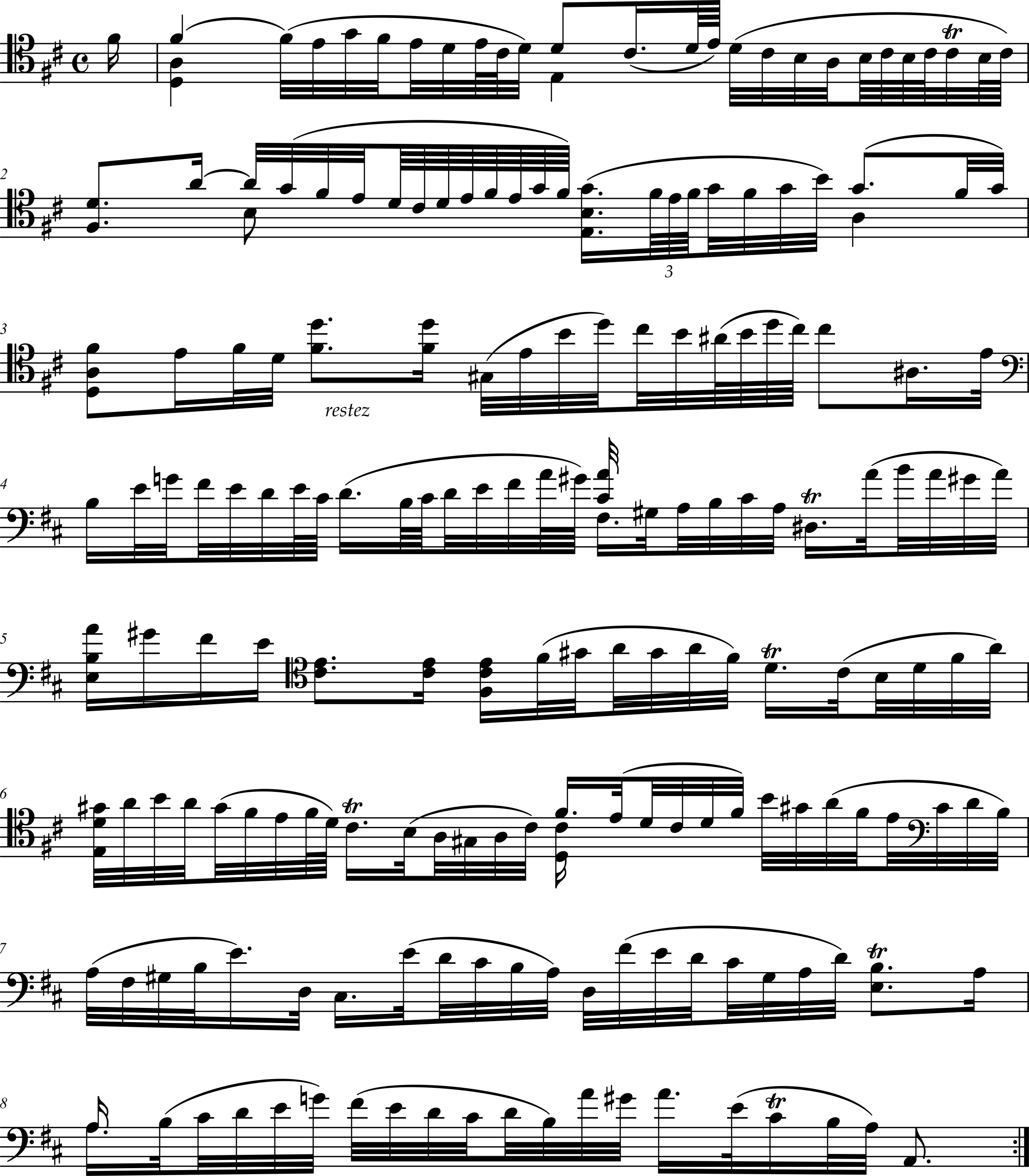C. Thirty-Second-Note Triplets and Sixty-Fourth Notes
Thirty-Second-Note Triplets
Exercise 7C-1 features thirty-second-note triplets notated as sextuplets, spanning an eighth-note division of the dotted-quarter-note beat. Exercise 7C-2 features thirty-second-note triplets as a duple subdivision of sixteenth-note triplets.
The focus of Exercise 7C-3 is the bottom staff, where the main challenge is accurate placement of pickup patterns relative to the melody. These include various groupings of thirty-second notes and thirty-second-note triplets. The grace notes may be performed as thirty-second-note triplets.
Exercise 7C-1: Samuel Coleridge-Taylor, Violin Concerto, Opus 80, Movement 2
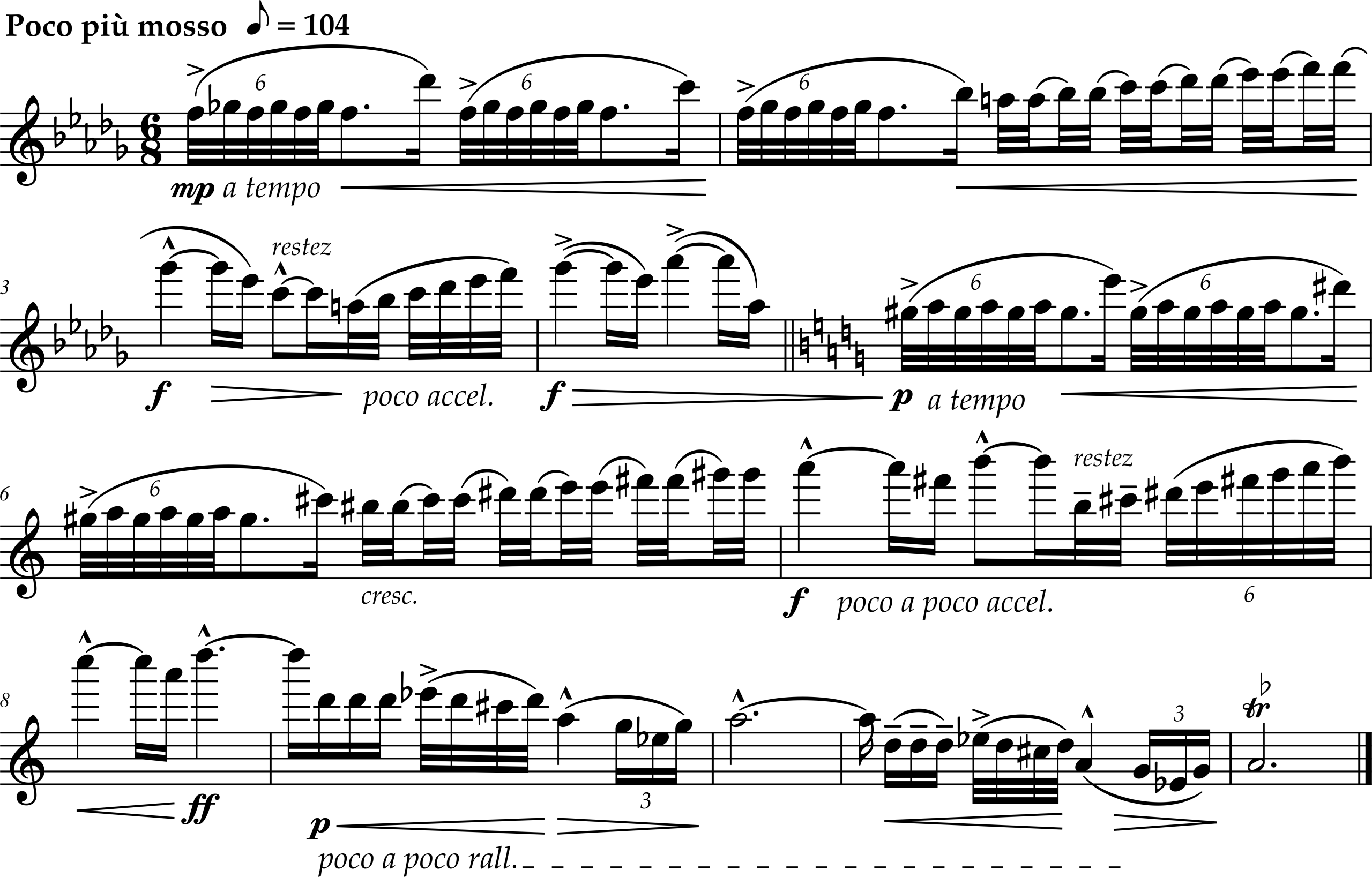
Exercise 7C-2: Marianna Martines, Keyboard Sonata in A Major, Movement 1
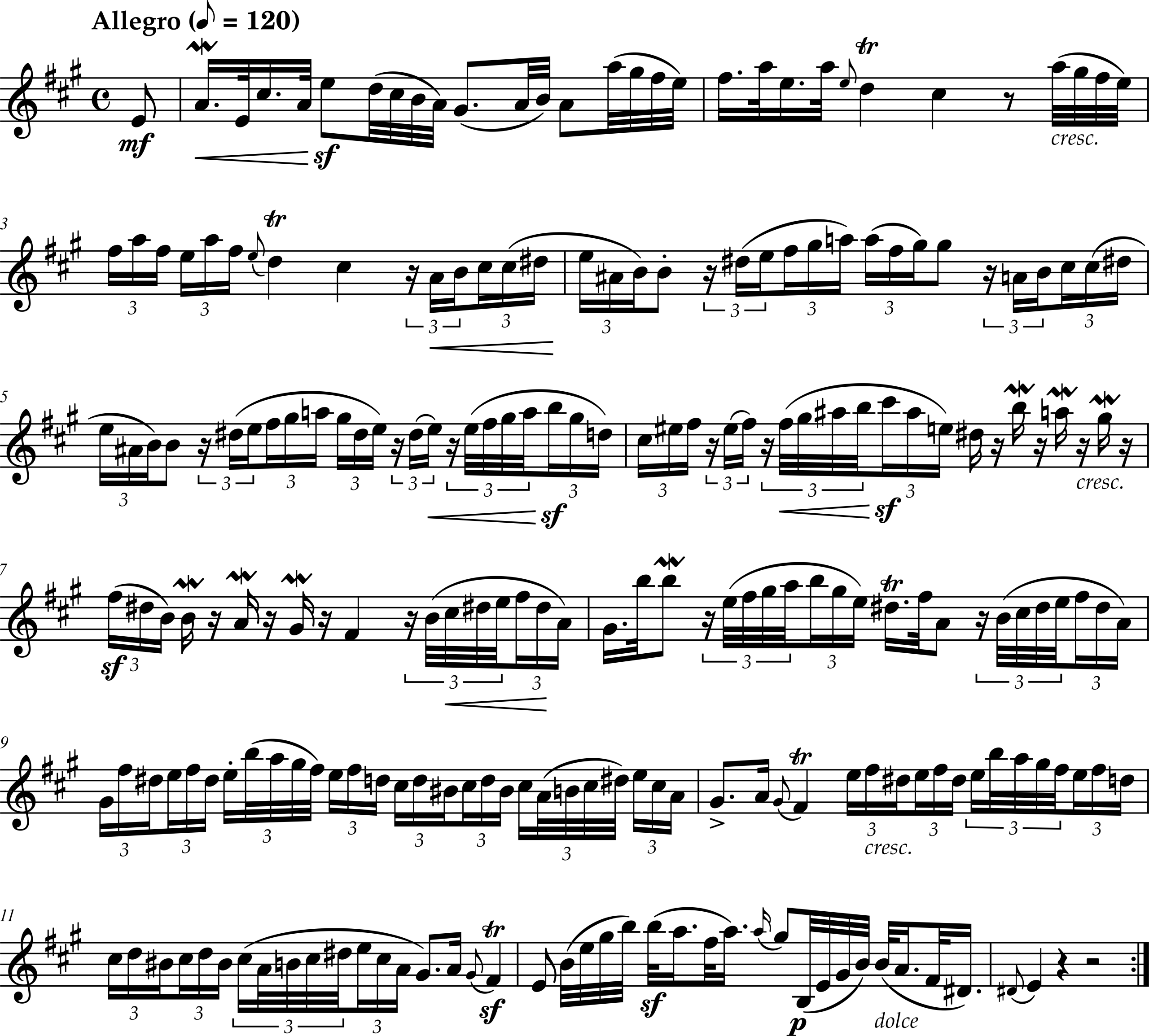
Exercise 7C-3: Ludwig van Beethoven, Symphony Number 3, Movement 2, Marcia funebre
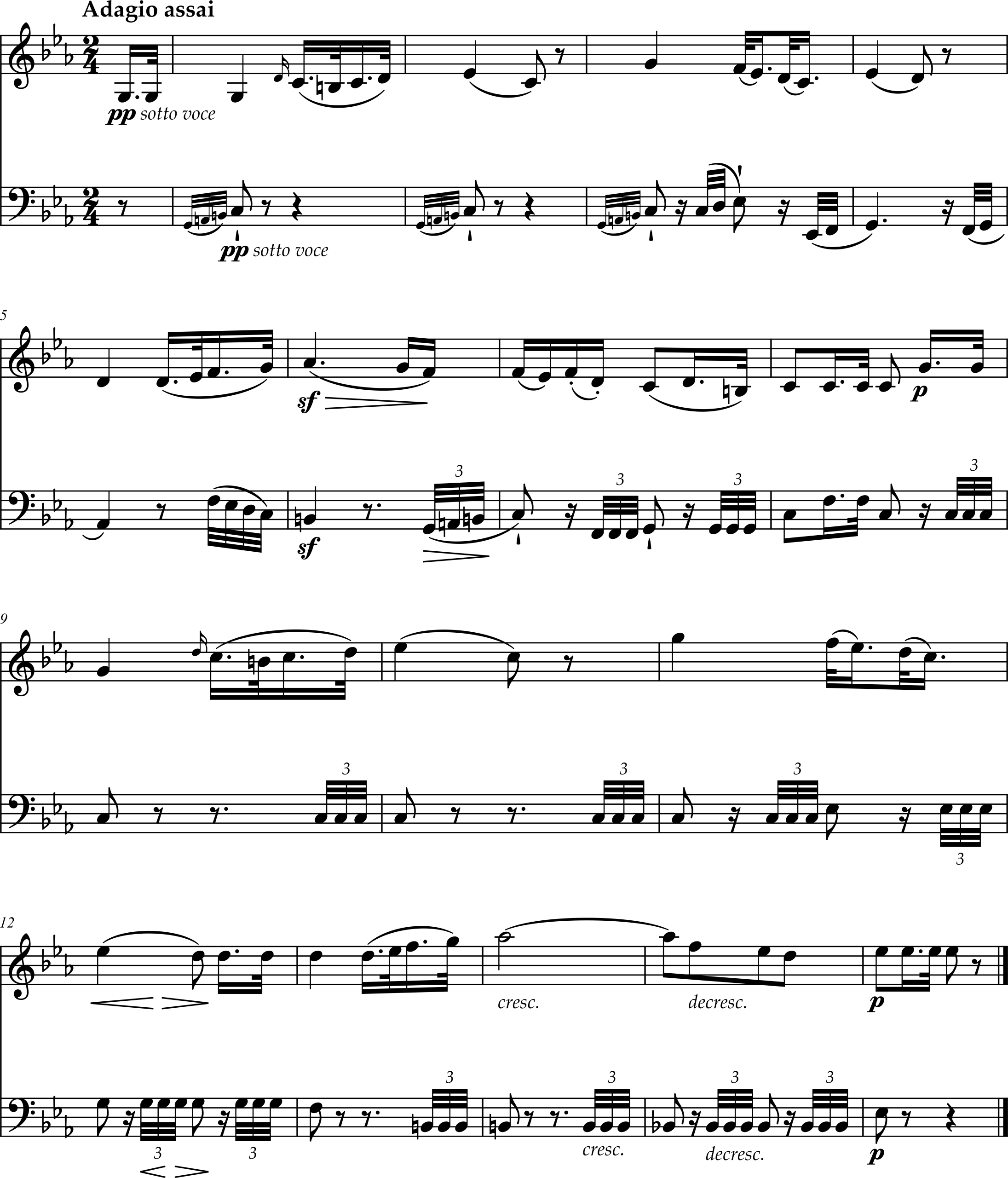
Sixty-Fourth Notes
The remaining exercises of this section feature sixty-fourth notes, intermixed with other small-subdivision patterns. Exercise 7C-4 features sixty-fourth notes in a brief scalar run and recurring dotted pattern. Exercises 7C-5 and 7C-6 feature sixty-fourth notes in various dotted configurations across both systems, making these two exercises ideal for duet performance. Finally, Exercise 7C-7 is a particularly challenging single-line passage that pulls together the full range of topics from this chapter.
Exercise 7C-4: Wolfgang Amadeus Mozart, Violin Sonata in G Major, K. 27, Movement 1
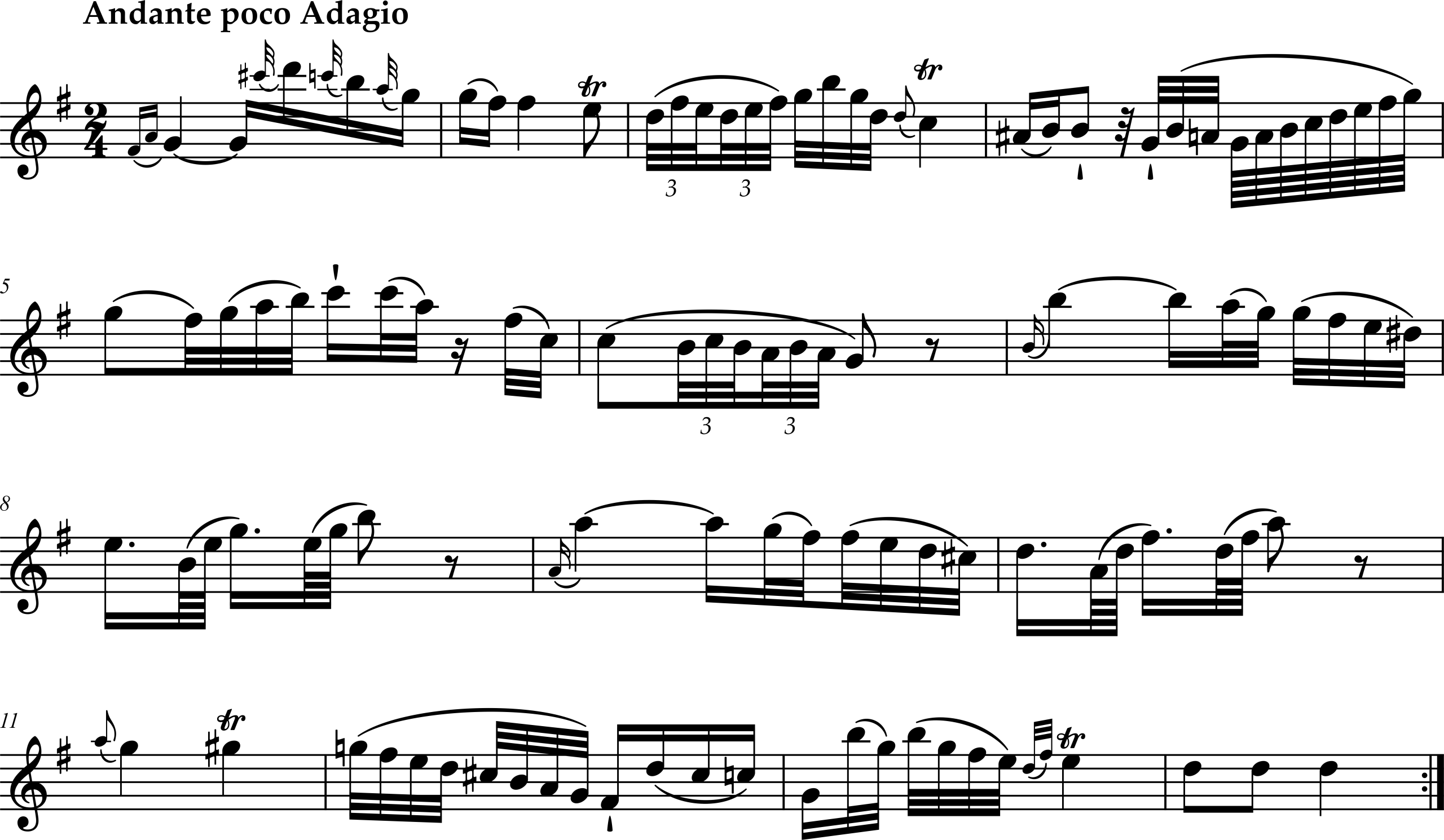
Exercise 7C-5: Antonio Salieri, Concerto for Flute and Oboe, Movement 2
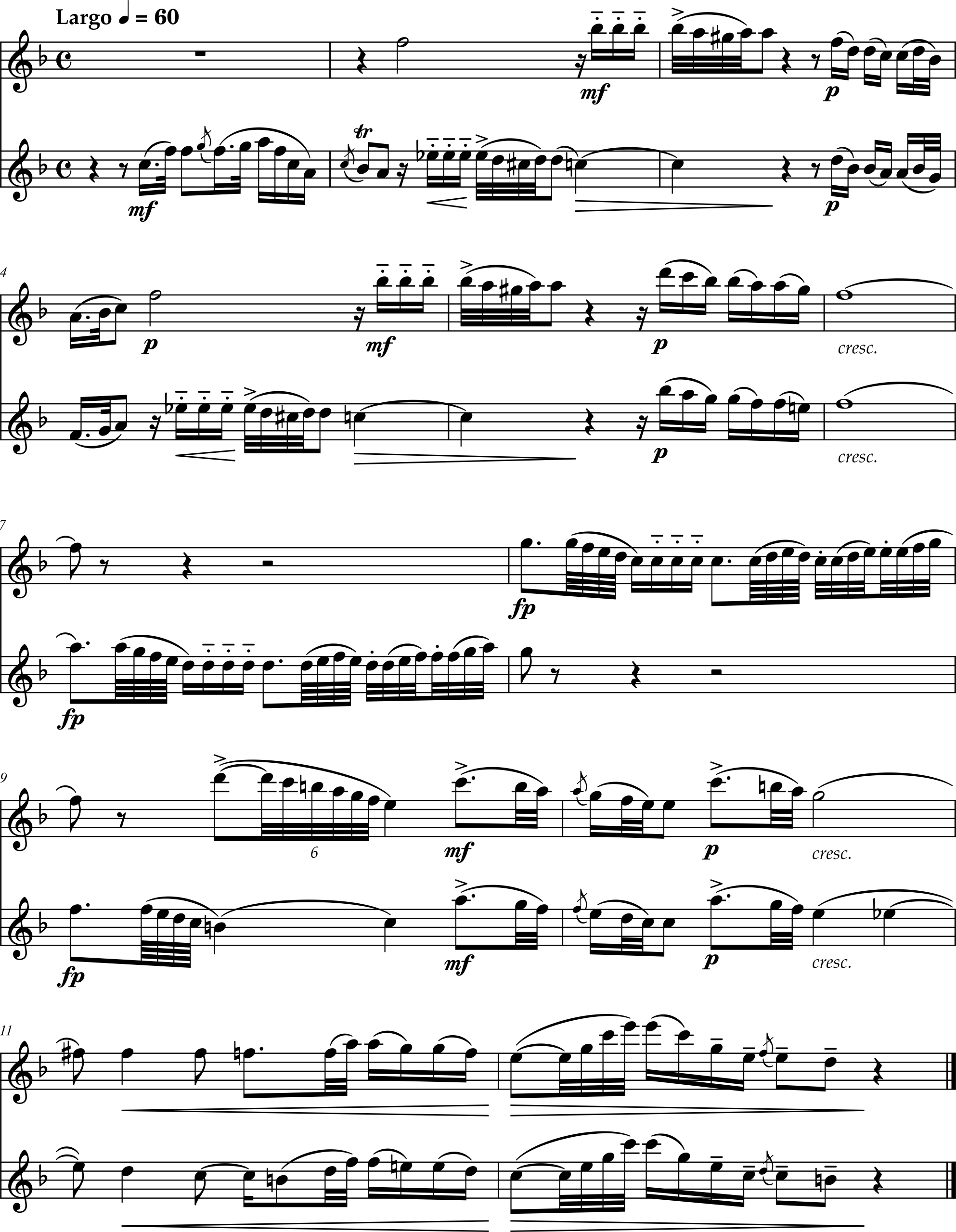
Exercise 7C-6: Antonio Salieri, Concerto for Flute and Oboe, Movement 2
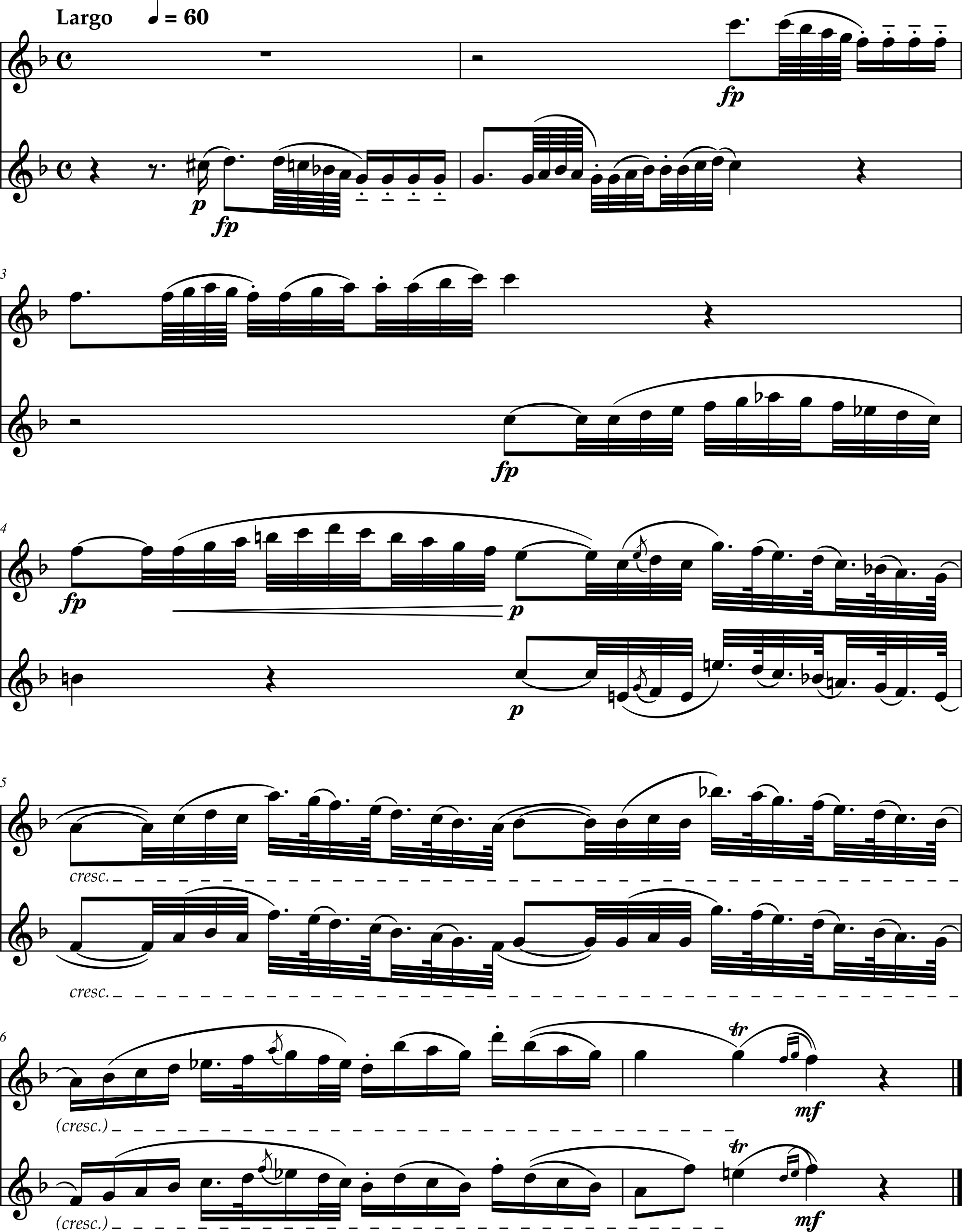
Exercise 7C-7: Johann Sebastian Bach, Cello Suite Number 6, Movement 2, Allemande
